2020年05月23日(土) - 2020年07月13日(月)
When it comes to the paintings of Edo era (1603 - 1868), you should not miss these two great artists of Kyoto, Maruyama Ōkyo and his subordinate Nagasawa Rosetsu.
We exhibit their various works including this cute dogs drawings, hoping anyone can enjoy their fabulous artworks.
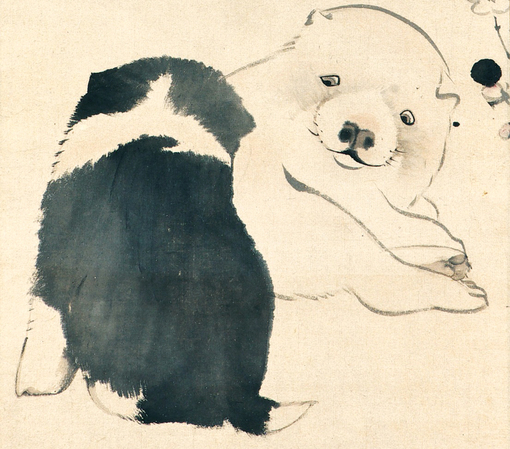
Many painters were active in 18th century Kyoto, including the recently increasingly popular Ito Jakuchu
(1716-1800). Among them was Maruyama Ōkyo (1733-1795), who gained popularity for his paintings that emphasized
shasei (sketching from life), and trained many disciples. One of his students, Nagasawa Rosetsu (1754-1799), mastered Ōkyo’s painting style and attempted several other styles, eventually developing his own original form and leaving behind many unique works.
In this exhibition we will be showing the works of Maruyama Ōkyo and Nagasawa Rosetsu, exploring their
variations, and comparing their compositions of similar subjects to highlight the unique charms of both painters.
We exibit 32 paintings of Okyo & Rosetsu for the first time in public.
| Title | Ōkyo & Rosetsu - Edo Paintings for Beginners - |
|---|---|
| Dates | April 25 2020 - July 13 2020 1st term: May 23 - June 22 2nd term: June 24 - July 13 |
| Opening Hours | 10:00 am – 5:00 pm (last entry 4:30 pm) |
| Closed | Tuesday |
| Entry Fee | General / University student: ¥900 High school student: ¥500 Elementary / Junior high school student: ¥350 Disabled person and up to one helper: ¥500 * We give discount for groups of 20 or more * Free for preschool children |
| Organizer | Saga Arashiyama Museum of Arts & Culture |
| Supported by | Kyoto Prefecture, Kyoto City Board of Education |
| Related documents | Leaflet |

Maruyama Ōkyo (1733-1795)
Maruyama Ōkyo was born into a farming family in Anada Village, Tamba Province (north Kyoto), and at a young age made dolls and Western-style perspective glasses paintings. He later studied under Ishida Yutei (1721-1786) and learned the basics of the Kano school.
Through an encounter with Yujō, a monk of Enman-in temple (1723-1773), who painted himself and was also familiar with honzōgaku (herbology), he began to emphasise the importance of 'sketching' in his work.
After Yujō's death, he gained the support of many wealthy merchants, such as the Mitsui family, and vigorously produced large screens and fusuma (sliding door) paintings. Although he is said to have suffered from eye problems in his later years, in 1795 he completed the Daijō-ji temple wall paintings, including the 'Peacock on Pine Tree'. In contrast to works such as Peony and Peacock (Shōkokuji temple, Kyoto), which were painted in richly coloured colours, the paintings depicted pine trees and peacocks using only subtly shaded black ink, and he continued to pursue new forms of expression until his final years.
Nagasawa Rosetsu (1754-1799)
Nagasawa Rosetsu is said to have been born in Yodo, Yamashiro Province (south of Kyoto), and spent his childhood at home, after which he was introduced to Maruyama Ōkyo.
It is known that before and after his introduction to Ōkyo, he used the name 'Ushu' and changed it to 'Rosetsu' in 1781.
H
e painted works such as Peony Peacock and Xi Wangmu (Queen Mother of the West), which were faithfully inherited from Ōkyo's painting style, but he also painted eccentric compositions from his early works.
Compared to Ōkyo's style, his painting style changed to one that could be seen as bold and rough, and in his final years he left works such as 500 Arhats depicted in 3cm square papre. He died at the age of 45.
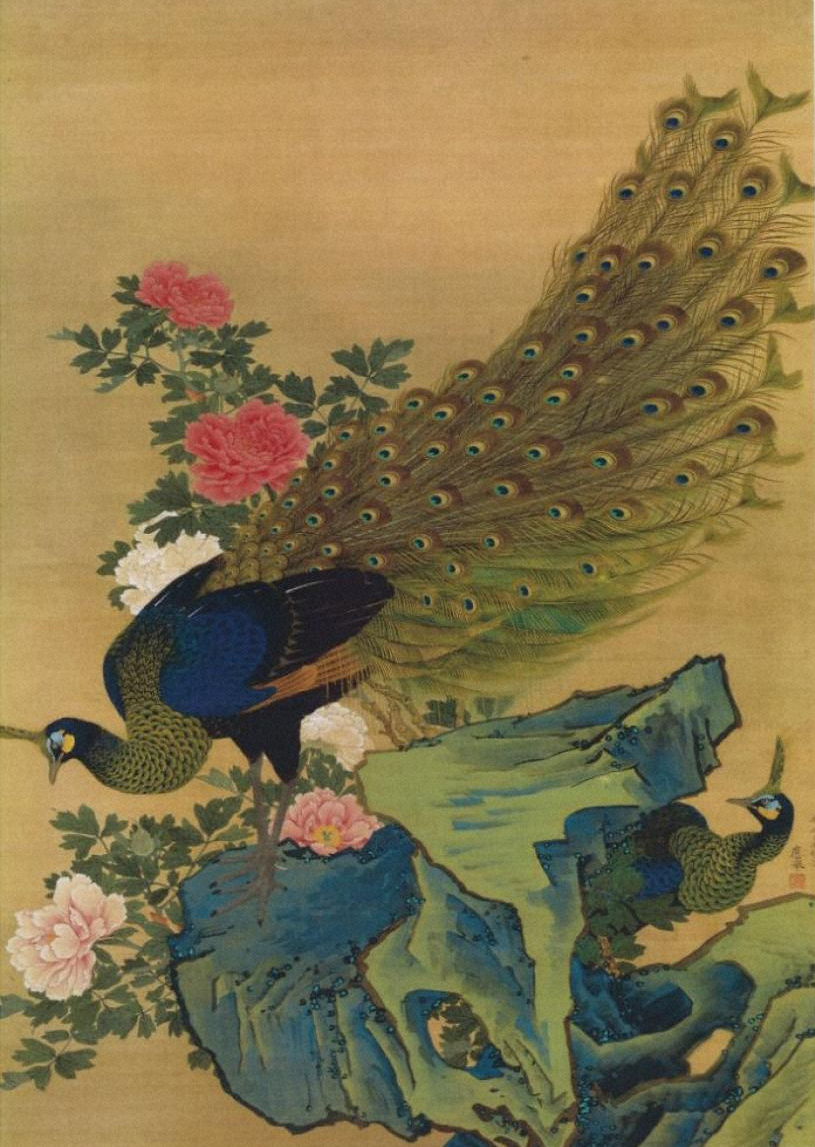
Peacock by Maruyama Ōkyo (Fukuda Art Museum)
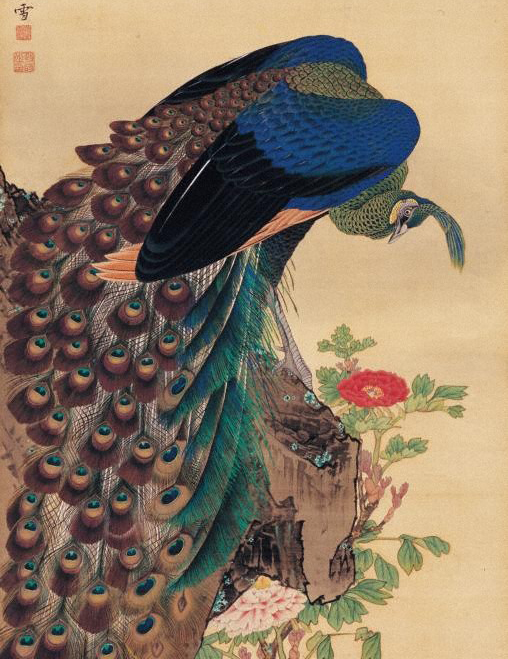
Peacock by Nagasawa Rosetsu (Kamigoryo shrine)
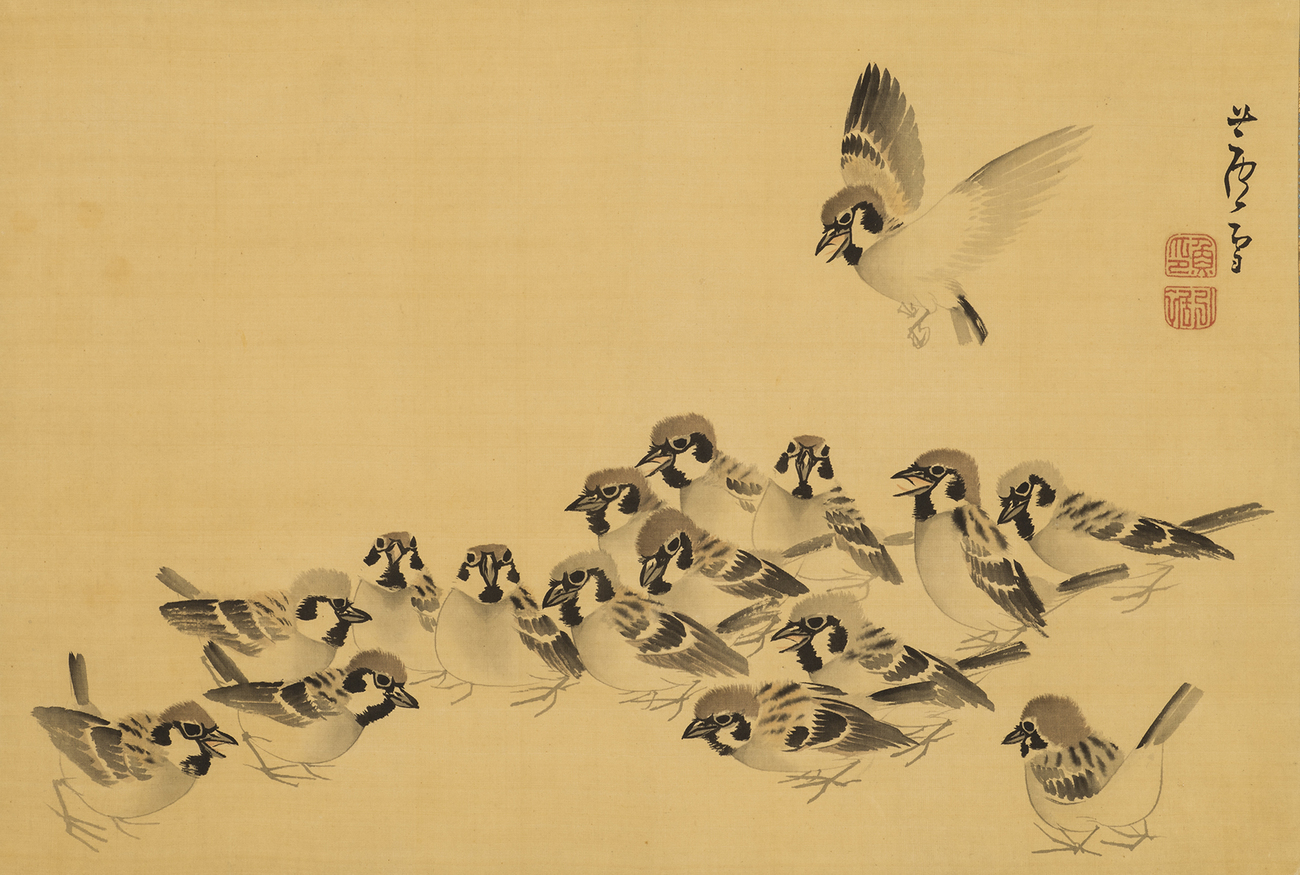
Happy Sparrows by Nagasawa Rosetsu (Fukuda Art Museum)
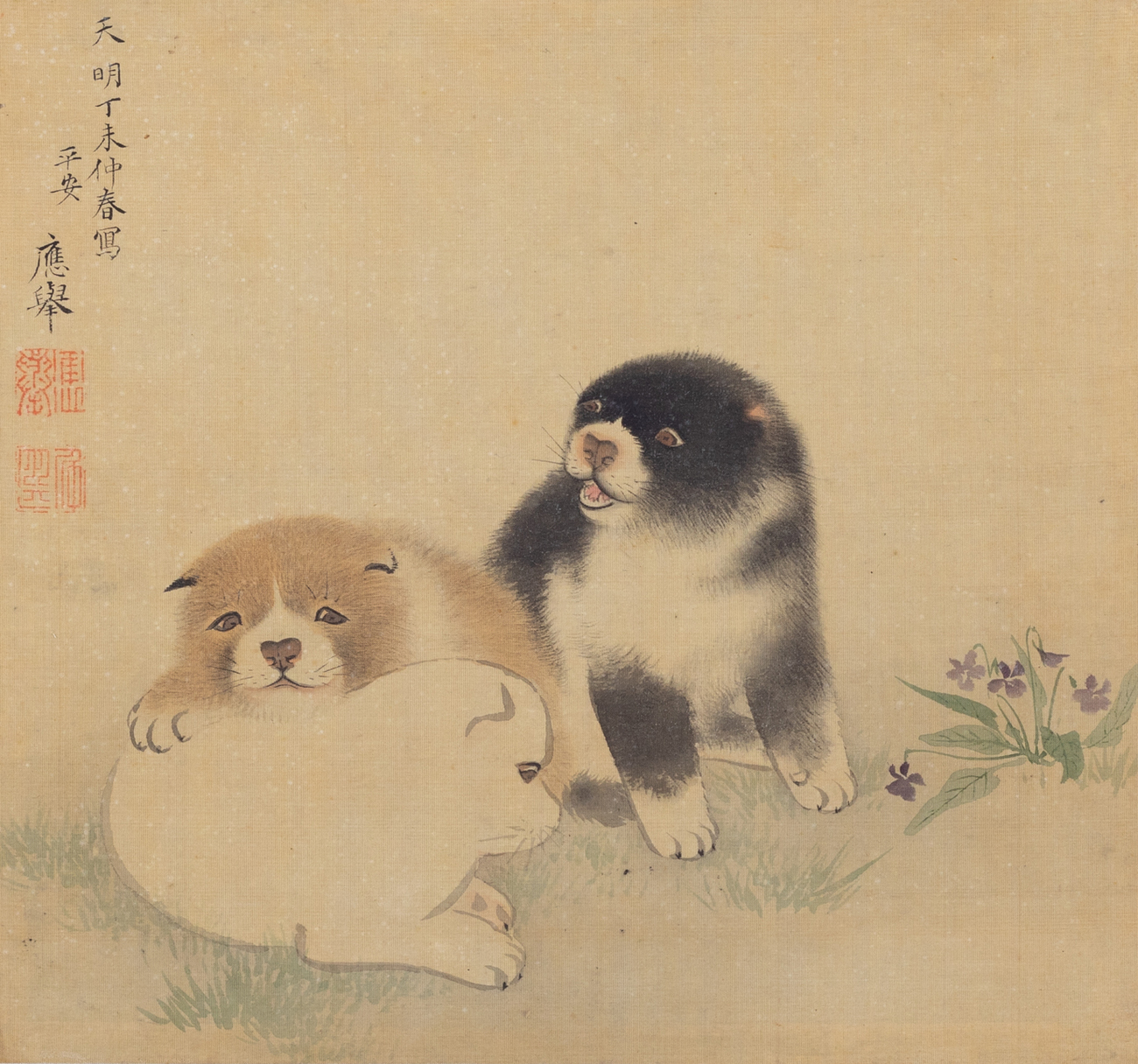
Dogs by Maruyama Ōkyo (Private collection)
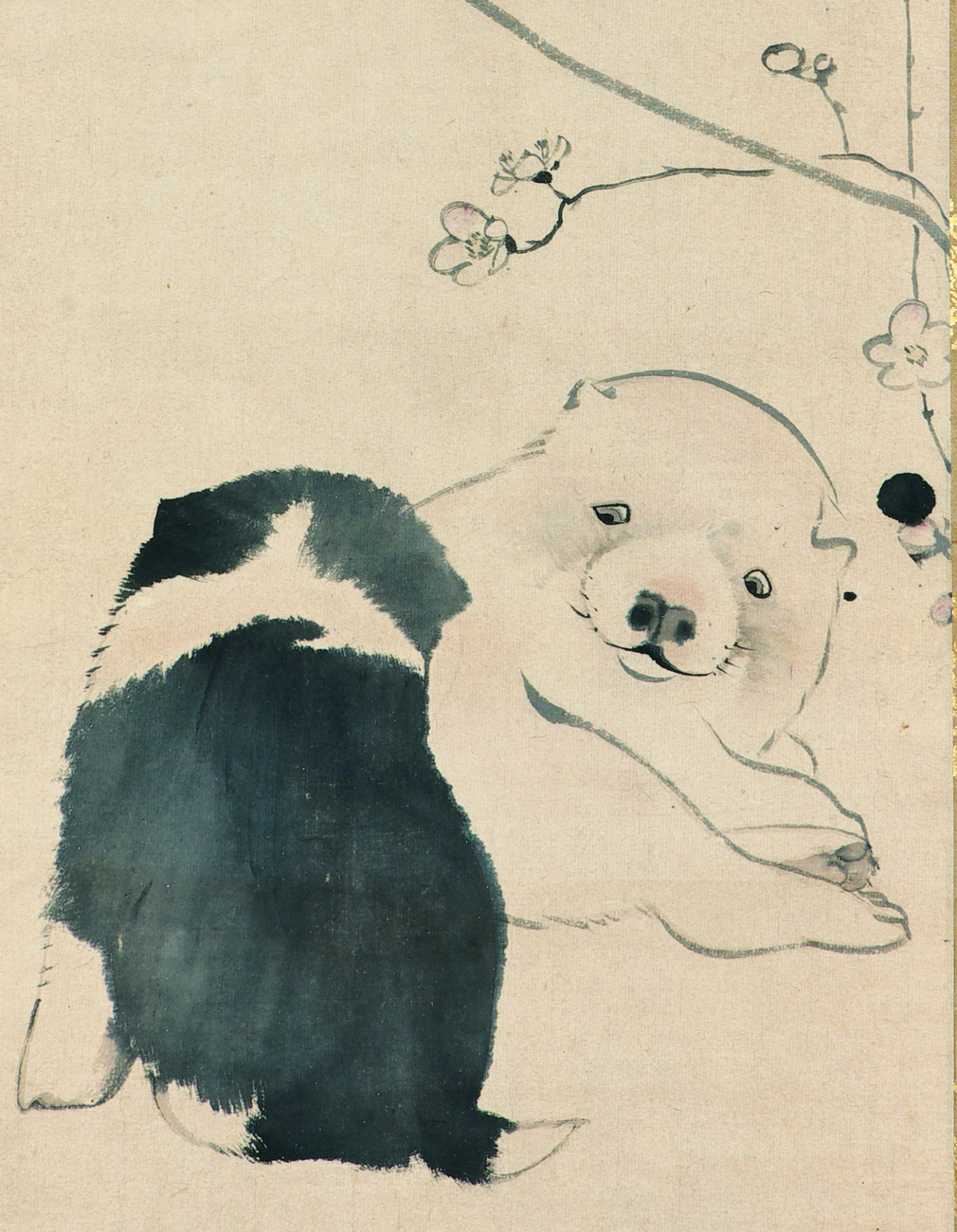
Dogs with Plum Blossoms (Private Collection)